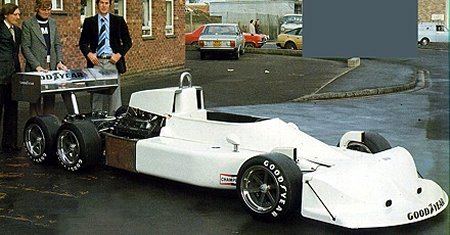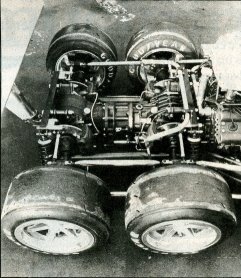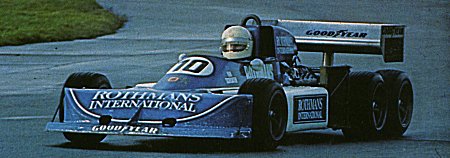With the apparent technical advantages of this concept laid out, Max Mosely (Herd's partner at March Cars) pressed for a prototype to be built. Max was more business-minded than Robin and had already noted that the P34 had been a tremendous publicity coup for Tyrell. Aside from the technical merits, he believed a March six-wheeler would be an irresistible package to present to potential sponsors.
The car was designated as the March 2-4-0 following the practice used to describe railway rolling stock: Two wheel steering, Four wheel drive, Zero differential.
Unfortunately, the March team was at something of a low point financially during 1976/77 and developing an all-new six-wheel car would have been too expensive. As a compromise measure, a 1976-design Cosworth DFV-powered March 761 was adapted by team engineer Wayne Eckersley in a quiet corner of the Bicester factory. Existing parts from the factory stores were used wherever possible.
But this wasn't the only compromise. A key feature of a car with four driven wheels at the rear would be an ingeniously-designed and very strong gearbox. Ingenuiety was required to minimise any frictional power losses. Increased strength would be needed to counteract the higher torsional and flexural stresses that the close-coupled four-wheel-drive system would generate.
Herd's original design for the gearbox casing recognised this and specified a series of heavy strengthening ribs to counteract the additional loading. But at some point in development, after costing the design, it was decided that the casting would be too complex and expensive to produce as it was. By way of a cost-cutting measure, some of the ribs were duly removed from the drawing.
In fact, the design used a standard Hewland gearbox for the first axle. To this, the new casing, gears and an extended pinion for the second axle were fitted. Practically, this meant that any 761 chassis could be easily adapted should the concept prove workable.
|


